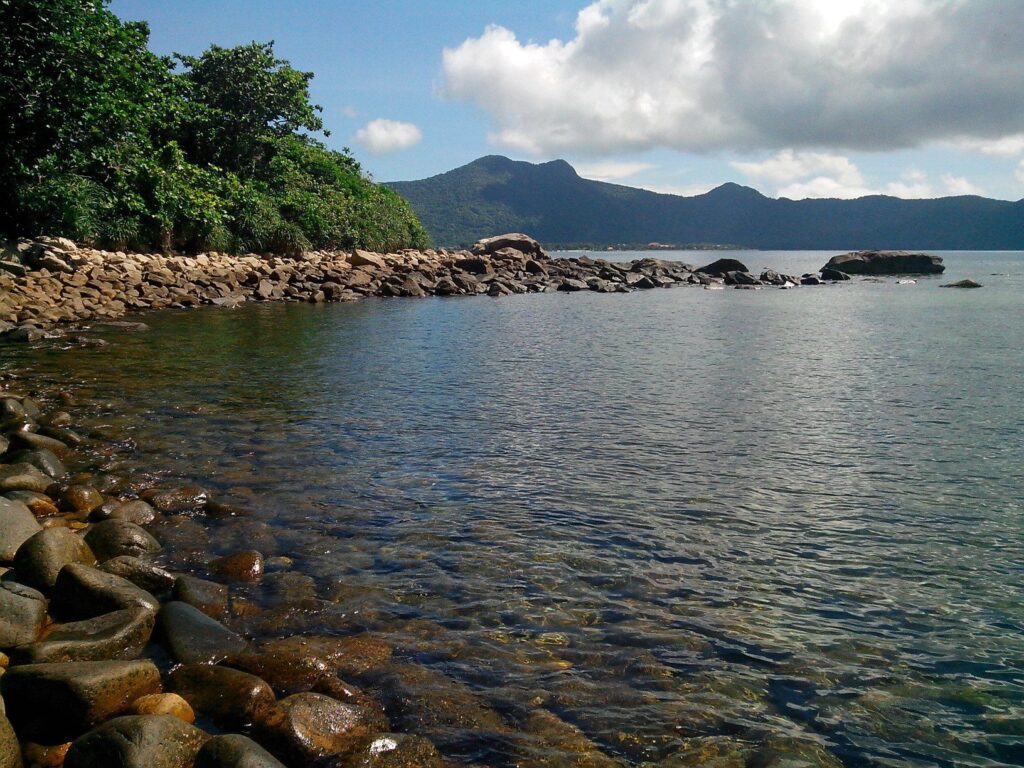Based on factors such as topography, climate, soil conditions, plant communities, and human influence, the forests of Con Dao National Park can be divided into four main ecosystems:
Low-Mountain Forest Ecosystem
This ecosystem covers most of the area across all 14 islands, stretching from the shoreline up to the highest peak, Mount Thanh Gia (577 m).
It consists mainly of steep rocky mountains with exposed cliffs, vertical rock faces, and areas constantly impacted by strong sea winds.
Vegetation structure varies by location:
- Leeward mountain slopes feature thick soil layers, multi-tiered forest canopies, and a diverse range of timber species.
- Windward slopes facing the sea have harsh conditions with strong winds, resulting in vegetation dominated by shrubs and small, low-growing trees with dense branching. These plants grow close together to withstand the wind, forming a single-layer canopy that appears like a slanted green surface from above.
Coastal Sand-Dune and Beach Forest Ecosystem
This ecosystem forms a narrow strip on the eastern side of Con Son Island, extending about 15 km from Mui Da Trang (An Hoi) to Co Ong Airport.
It includes coastal sand dunes and long stretches of white-sand beaches inhabited by drought-tolerant plant species adapted to harsh, sandy environments.
Mangrove Forest Ecosystem
Mangrove forests in Con Dao are limited in size, covering around 30 hectares, and are found in:
- Shallow straits
- Sandy areas
- Coral debris zones
- Coastal sedimented sites affected by daily tides
These mangroves occur on three major islands: Con Son, Bay Canh, and Hon Ba.
Characteristic mangrove species include:
- Rhizophora (Red Mangrove)
- Bruguiera
- Avicennia (White Mangrove)
- Lumnitzera
Acidic Wetland Forest Ecosystem (Post-Mangrove Forest)
This is the smallest ecosystem type, located in An Hai.
It develops above the mangrove zone on white sandy soils and is seasonally inundated during the rainy months.
The dominant plant species here is:
- Melaleuca cajuputi (Cajeput Tree)
A Unique Ecological Continuum
These four ecosystems are distributed in a continuous sequence within a relatively small geographical space, making Con Dao National Park a unique natural landscape with significant ecological, successional, and scientific value.








